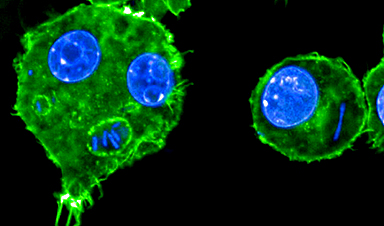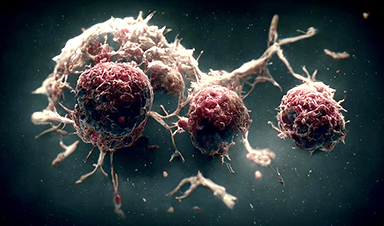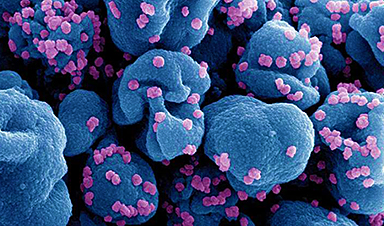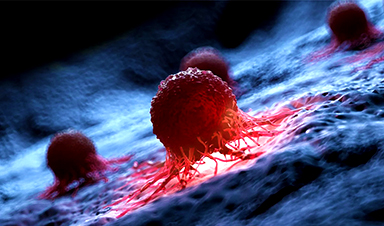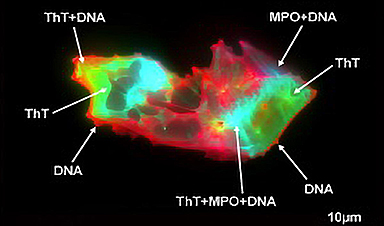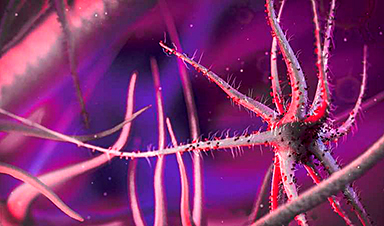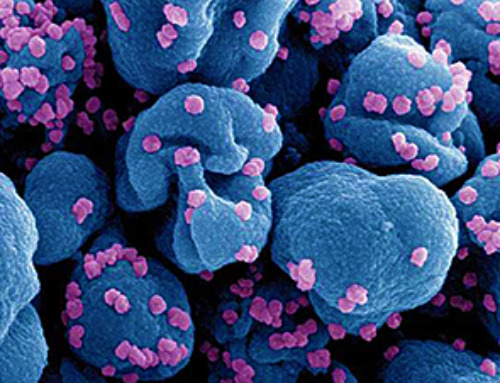Scientists have documented the way a single gene in the bacterium that causes bubonic plague, Yersinia pestis, allowed it to survive hundreds of years by adjusting its virulence and the length of time it took to kill its victims, but these forms of plague ultimately died out.
A study by researchers at McMaster University and France’s Institut Pasteur, published in the journal Science, addresses some fundamental questions related to pandemics: how do they enter human populations, cause immense sickness, and evolve different levels of virulence to persist in populations?
The Black Death remains the single deadliest pandemic in recorded human history, killing an estimated 30–50% of the populations of Europe, Western Asia and Africa as it moved through those regions. Appearing in the 14th century, it re-emerged in waves over more than 500 years, persisting until 1840.
The Black Death was caused by the same bacteria which caused the Plague of Justinian, the first plague pandemic which had broken out in the mid-500s. The third plague pandemic began in China in 1855 and continues today. Its deadly effects are now more controlled by antibiotics but are still felt in regions like Madagascar and the Democratic Republic of Congo, where cases are regularly reported.
“This is one of the first research studies to directly examine changes in an ancient pathogen, one we still see today, in an attempt to understand what drives the virulence, persistence and/or eventual extinction of pandemics,” says Hendrik Poinar, co-senior author of the study, director of the McMaster Ancient DNA Center and holder of the Michael G. DeGroote Chair in Genetic Anthropology.
Strains of the Justinian plague became extinct after 300 years of ravaging European and Middle Eastern populations. Strains of the second pandemic emerged from infected rodent populations, causing the Black Death, before breaking into two major lineages. One of these two lineages is the ancestor of all present-day strains. The other re-emerged over centuries in Europe and ultimately went extinct by the early 19th century.
Using hundreds of samples from ancient and modern plague victims, the team screened for a gene known as pla, a high copy component of Y. pestis which helps it move through the immune system undetected to the lymph nodes before spreading to the rest of the body.
An extensive genetic analysis revealed that its copy number, or total number of pla genes found in the bacterium, had decreased in later outbreaks of the disease, which in turn decreased its mortality by 20% and increased the length of its infection, meaning the hosts lived longer before they died. These studies were performed in mice models of bubonic plague.
Conversely, when the pla gene was in its original, high copy number, the disease was much more virulent and killed each of its hosts and did so much quicker.

The scientists also identified a striking similarity between the trajectories of modern and ancient strains, which independently evolved similar reductions in pla in the later stages of the first and second pandemic, and so far, in three samples from the third pandemic, found in Vietnam today.
In both the Justinian and Black Death plagues, the evolutionary change occurred approximately 100 years after the first outbreaks. Scientists propose that when the gene copy number dropped and the infected rats lived longer, they could spread infection farther, ensuring the reproductive success of the pathogen.
“The reduction of pla may reflect the changing size and density of rodent and human populations,” explains Poinar. “It’s important to remember that the plague was an epidemic of rats, which were the drivers of epidemics and pandemics. Humans were accidental victims.”
Black rats in cities likely acted as “amplification hosts” due to their high numbers and proximity to humans. Because black rats are highly susceptible to Y. pestis, the pathogen needed rat populations to stay high enough to supply new hosts for Y. pestis to persist and allow the pandemic cycle to continue.
However, the pla-reduced strains eventually went extinct, likely reflecting another shift in the host-pathogen relationship within their environment.
When the researchers searched for signs of depletion in a large set of samples of the third pandemic preserved in a collection at the Institut Pasteur, they found three contemporary strains with pla depletion.
“Thanks to our international collaborators who monitor local epidemics of plague worldwide, we were able to find the unique bacterial samples used for this project, akin to finding three rare needles in a haystack,” says Javier Pizarro-Cerdá, co-senior author of the work, director of the Yersinia Research Unit and of the WHO Collaborating Center for Plague at the Institut Pasteur.
The institute houses one of the world’s richest collections of modern Y. pestis isolates, adds Guillem Mas Fiol, co-lead author of the study and postdoctoral researcher supervised by Pizarro-Cerdá.
“One of the most interesting aspects of our research was the possibility to explore a feature first observed in extinct plague strains, that could, for the first time, be experimentally tested in living contemporary bacterial strains,” he says.
“Although our research sheds light on an interesting pattern in the evolutionary history of plague, the majority of strains which continue to circulate today in Africa, South America and India are the more virulent ones, the ones that were previously responsible for massive mortality,” says Ravneet Sidhu, co-lead author of the study, and Ph.D. candidate at the McMaster Ancient DNA Center.
More information: Ravneet Kaur Sidhu et al, Attenuation of virulence in Yersinia pestis across three plague pandemics, Science (2025). DOI: 10.1126/science.adt3880. www.science.org/doi/10.1126/science.adt3880
Journal information: Science
News
Scientists Melt Cancer’s Hidden “Power Hubs” and Stop Tumor Growth
Researchers discovered that in a rare kidney cancer, RNA builds droplet-like hubs that act as growth control centers inside tumor cells. By engineering a molecular switch to dissolve these hubs, they were able to halt cancer [...]
Platelet-inspired nanoparticles could improve treatment of inflammatory diseases
Scientists have developed platelet-inspired nanoparticles that deliver anti-inflammatory drugs directly to brain-computer interface implants, doubling their effectiveness. Scientists have found a way to improve the performance of brain-computer interface (BCI) electrodes by delivering anti-inflammatory drugs directly [...]
After 150 years, a new chapter in cancer therapy is finally beginning
For decades, researchers have been looking for ways to destroy cancer cells in a targeted manner without further weakening the body. But for many patients whose immune system is severely impaired by chemotherapy or radiation, [...]
Older chemical libraries show promise for fighting resistant strains of COVID-19 virus
SARS‑CoV‑2, the virus that causes COVID-19, continues to mutate, with some newer strains becoming less responsive to current antiviral treatments like Paxlovid. Now, University of California San Diego scientists and an international team of [...]
Lower doses of immunotherapy for skin cancer give better results, study suggests
According to a new study, lower doses of approved immunotherapy for malignant melanoma can give better results against tumors, while reducing side effects. This is reported by researchers at Karolinska Institutet in the Journal of the National [...]
Researchers highlight five pathways through which microplastics can harm the brain
Microplastics could be fueling neurodegenerative diseases like Alzheimer's and Parkinson's, with a new study highlighting five ways microplastics can trigger inflammation and damage in the brain. More than 57 million people live with dementia, [...]
Tiny Metal Nanodots Obliterate Cancer Cells While Largely Sparing Healthy Tissue
Scientists have developed tiny metal-oxide particles that push cancer cells past their stress limits while sparing healthy tissue. An international team led by RMIT University has developed tiny particles called nanodots, crafted from a metallic compound, [...]
Gold Nanoclusters Could Supercharge Quantum Computers
Researchers found that gold “super atoms” can behave like the atoms in top-tier quantum systems—only far easier to scale. These tiny clusters can be customized at the molecular level, offering a powerful, tunable foundation [...]
A single shot of HPV vaccine may be enough to fight cervical cancer, study finds
WASHINGTON -- A single HPV vaccination appears just as effective as two doses at preventing the viral infection that causes cervical cancer, researchers reported Wednesday. HPV, or human papillomavirus, is very common and spread [...]
New technique overcomes technological barrier in 3D brain imaging
Scientists at the Swiss Light Source SLS have succeeded in mapping a piece of brain tissue in 3D at unprecedented resolution using X-rays, non-destructively. The breakthrough overcomes a long-standing technological barrier that had limited [...]
Scientists Uncover Hidden Blood Pattern in Long COVID
Researchers found persistent microclot and NET structures in Long COVID blood that may explain long-lasting symptoms. Researchers examining Long COVID have identified a structural connection between circulating microclots and neutrophil extracellular traps (NETs). The [...]
This Cellular Trick Helps Cancer Spread, but Could Also Stop It
Groups of normal cbiells can sense far into their surroundings, helping explain cancer cell migration. Understanding this ability could lead to new ways to limit tumor spread. The tale of the princess and the [...]
New mRNA therapy targets drug-resistant pneumonia
Bacteria that multiply on surfaces are a major headache in health care when they gain a foothold on, for example, implants or in catheters. Researchers at Chalmers University of Technology in Sweden have found [...]
Current Heart Health Guidelines Are Failing To Catch a Deadly Genetic Killer
New research reveals that standard screening misses most people with a common inherited cholesterol disorder. A Mayo Clinic study reports that current genetic screening guidelines overlook most people who have familial hypercholesterolemia, an inherited disorder that [...]
Scientists Identify the Evolutionary “Purpose” of Consciousness
Summary: Researchers at Ruhr University Bochum explore why consciousness evolved and why different species developed it in distinct ways. By comparing humans with birds, they show that complex awareness may arise through different neural architectures yet [...]
Novel mRNA therapy curbs antibiotic-resistant infections in preclinical lung models
Researchers at the Icahn School of Medicine at Mount Sinai and collaborators have reported early success with a novel mRNA-based therapy designed to combat antibiotic-resistant bacteria. The findings, published in Nature Biotechnology, show that in [...]
